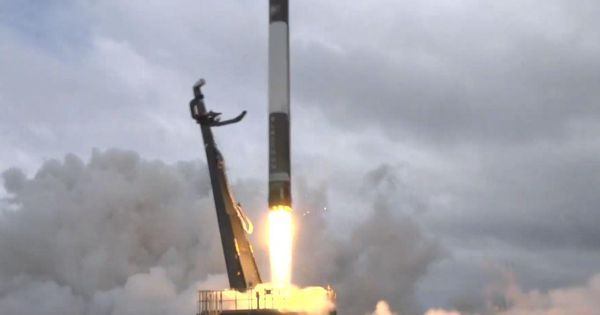Get the latest international news and world events from around the world.

Program: 2019 is on the horizon
It will be our second conference totally focussed on the science of actual human rejuvenation therapies to repair the damage of aging.
We are happy to begin introducing the speakers, starting with Dr. Jerry Shay.
Dr. Shay is the Vice Chairman of the Department of Cell Biology at The University of Texas Southwestern Medical Center in Dallas. Dr. Shay´s work on the relationships of telomeres and telomerase to aging and cancer is well recognized.
“Jerry has been a stalwart supporter of the SENS concept for well over a decade, and a world leader in the telomere biology field for much longer than that. He spoke at the very first SENS conference, back in 2003, and it will be a joy to welcome him again.” says Aubrey de Grey.

Program: We are happy to announce Dr. Judith Campisi as a speaker for the 2019 Undoing Aging Conference
At Lawrence Berkeley National Laboratory and at the Buck Institute for Research on Aging, Dr. Judith Campisi established a broad program to understand the relationship between aging and age-related disease.
Judith Campisi says: “Aging research has entered an era of unprecedented hope for interventions that can prevent, delay and, in some cases, reverse much of the functional decline that is a hallmark of aging. There is still a lot of research to be done! I am delighted to be among the speakers at Undoing Aging 2019, where I will discuss the opportunities and challenges of our recent research.”
“Judy has been a towering figure in the field of senescent cells for decades; among other things she pioneered the idea that senescent cells could be actively toxic to their environment and the discovery that cell senescence has a beneficial physiological role in wound healing. She was also one of the first senior gerontologists to appreciate the merits of the SENS approach when I first proposed it in 2000, and her support for it and us ever since has been of incalculable benefit in helping it achieve the mainstream status it enjoys today.” says Aubrey de Grey.

Program: The 2019 Undoing Aging Conference will again include poster sessions
In addition, a small number of posters will be selected for oral presentation.
Poster topics should lie within the scope of the conference: Research contributing to the eventual postponement of age-related decline in health, with an emphasis on measures that repair damage rather than slowing its creation. Poster submissions are due on January 31, 2019.
To submit your poster go to:


Inside Google’s Rebooted Robotics Program
Google’s new lab is indicative of a broader effort to bring so-called machine learning to robotics. Researchers are exploring similar techniques at places like the University of California, Berkeley, and OpenAI, the artificial intelligence lab founded by the Silicon Valley kingpins Elon Musk and Sam Altman. In recent months, both places have spawned start-ups trying to commercialize their work.
In 2013, the company started an ambitious, flashy effort to create robots. Now, its goals are more modest, but the technology is subtly more advanced.
Presidential candidate Andrew Yang talks geo-engineering, asteroid detection, space force and more!
We interviewed Andrew Yang, a Democratic candidate for president of the United States who has made an answer to automation one of the central issues of his campaign. The tech-minded candidate shares his thoughts on drones, geo-engineering, asteroid detection, space force and more!
#AndrewYang #Yang2020 #WhatTheFuture
CNET playlists: https://www.youtube.com/user/CNETTV/playlists
Download the new CNET app: https://cnet.app.link/GWuXq8ExzG
Like us on Facebook: https://www.facebook.com/cnet
Follow us on Twitter: https://www.twitter.com/cnet
Follow us on Instagram: http://bit.ly/2icCYYm

Rocket Lab Launches Experimental Satellite For DARPA On Its First Mission Of 2019
Rocket Lab has successfully launched its first rocket of 2019, a mission for the U.S. Defense Advanced Research Projects Agency (DARPA) that will test a novel method to deploy a satellite antenna in orbit.
The Electron rocket carrying the single satellite lifted off today, Thursday, March 28 from the company’s Launch Complex 1 on the Māhia Peninsula in New Zealand, where all of the company’s previous four rockets have also launched from. As per tradition, the rocket was given a nickname, this time being “Two Thumbs Up” – in honor of a team member who tragically died in a motorbike accident recently.
Inside the rocket is DARPA’s Radio Frequency Risk Reduction Deployment Demonstration (R3D2) satellite. Weighing in at 150 kilograms (330 pounds), it is the largest single satellite Rocket Lab has ever launched. Indeed, 150 kilograms is the upper limit of what the Electron can lift.

ID-Cap System uses tiny ingestible pill sensors to monitor patients
In the future, some commonly prescribed medication may have tiny trackers built into each capsule that monitor patients who take them. The technology is part of the ID-Cap system created by etectRx, a Florida company. The system has been submitted to the FDA for review and will undergo a 90-day study with Harvard’s Brigham and Women’s Hospital and the Fenway Institute.
